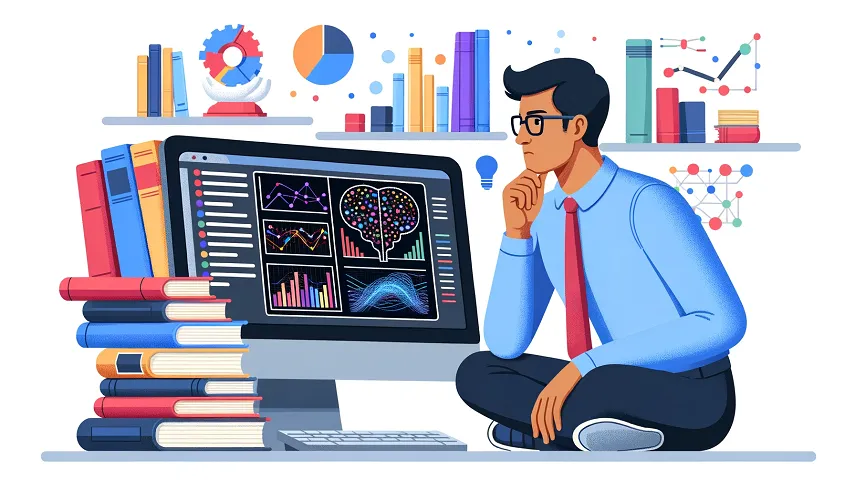Machine learning powers many digital products and services we use daily. It enables computers to identify patterns and make logical decisions with minimal human intervention.
This is accomplished through algorithms that are adjusted and refined using past data sets. One key concept is “garbage in, garbage out.” Poor-quality data will yield inaccurate results.
Types
Numerous types of machine learning algorithms have been tailored for certain use situations. A successful model selection is essential. For instance, a simple linear regression model works well for projecting continuous outcomes like revenue or sales but is inappropriate for applications that require considering seasonality or weather trends.
Deep learning is a well-known subset of machine learning that employs multiple layers of neural networks to carry out the most difficult ML tasks automatically. Technology makes voice recognition, speech translation, image categorization, and other processes possible. Well-known virtual assistants like Alexa, Cortana, and Siri also utilize it. It supported Facebook’s auto-tagging function, which tags recognizable faces automatically when it detects them. It is an essential component of autonomous driving. It’s commonly used in robot programming and other applications where the outcome of each decision can directly affect future results.

Basics
Machine learning uses algorithms — essentially lists of rules — adjusted and refined using past data sets to make predictions or categorize new information. It powers chatbots, predictive text, language translation apps, and self-driving cars.
For example, an on-demand music streaming service uses machine learning to identify your musical tastes and recommend new songs or artists you enjoy. This is called supervised learning. Unsupervised learning is used in many other applications like fraud detection or recognizing objects in images.
The core insight is that machines learn by observing and making predictions based on patterns in data sets instead of being programmed by humans with a group of instructions. Traditional programming, like cake baking, relies on following precise instructions to achieve an end goal. Still, the approach of machine learning is more similar to the way we learn as children.
The most sophisticated machine learning algorithms are neural networks, which are modeled on the structure of the human brain. These models use thousands or millions of processing nodes arranged into layers to recognize patterns and respond. Deep learning is the technology behind familiar technology like digital assistants, voice recognition and face-recognition capabilities. But it also enables advanced technologies like diagnosing medical conditions from a picture or decoding the words in a video.
Python
Machine learning automates tasks that would be time-consuming or impossible for a human to program, such as recognizing patterns in data points like numbers, photos or text. It also powers applications such as voice recognition, image classification and self-driving cars. For example, the technology behind an app that identifies a species of flower or recognizes faces in videos is powered by deep learning. This subset of ML has been responsible for recent, jaw-dropping breakthroughs such as Google’s AlphaGo algorithm, which beat multiple world-renowned “masters” at the complex board game Go.

While these algorithms have led to incredible innovations, they also present new business challenges. For instance, if an enterprise bases core business processes on flawed model predictions due to inaccurate or biased data sets, it could face regulatory or reputational harm.
Enterprises must use only reliable and accurate information to minimize these risks to train their machine-learning models. Ideally, this data is collected, validated and analyzed in-house. However, this is only sometimes feasible due to resource constraints and cost. As a result, many businesses turn to third-party providers of machine learning software and services. The most common and powerful is Python, which enables machine learning developers to write fast, concise and easy-to-understand code. Its simple syntax helps streamline the data validation, scraping, processing, refining and arranging functions necessary to create machine learning algorithms.
R Programming
Machine learning is a set of programming techniques that can automate data analysis. It can cluster, classify and analyze data to provide recommendations, fraud detection and other forecasts. Machine learning has moved from academic research to mainstream business applications with tools like the easy-to-learn R programming language.
Machine learning aims to identify patterns in large, unlabeled data sets. This process is unsupervised machine learning because the algorithm is not given specific instructions or guidance. Unsupervised machine learning algorithms can be trained to identify certain markers of illness, for example. This allows doctors to quickly and efficiently identify potential issues from medical imaging or other information, such as blood test results.

Another type of machine learning is natural language processing, which enables familiar technology like chatbots and digital assistants to recognize speech and text. This is based on machine learning algorithms such as support vector machines, hidden Markov models and, most notably, deep learning.
While these technologies can be useful and time-saving, they can also cause issues if not properly vetted. For instance, if data containing inherent biases is fed into an algorithm, it can perpetuate that bias and create forms of discrimination. The same is true for models that show people extreme content, which can contribute to polarization and spread conspiracy theories.






